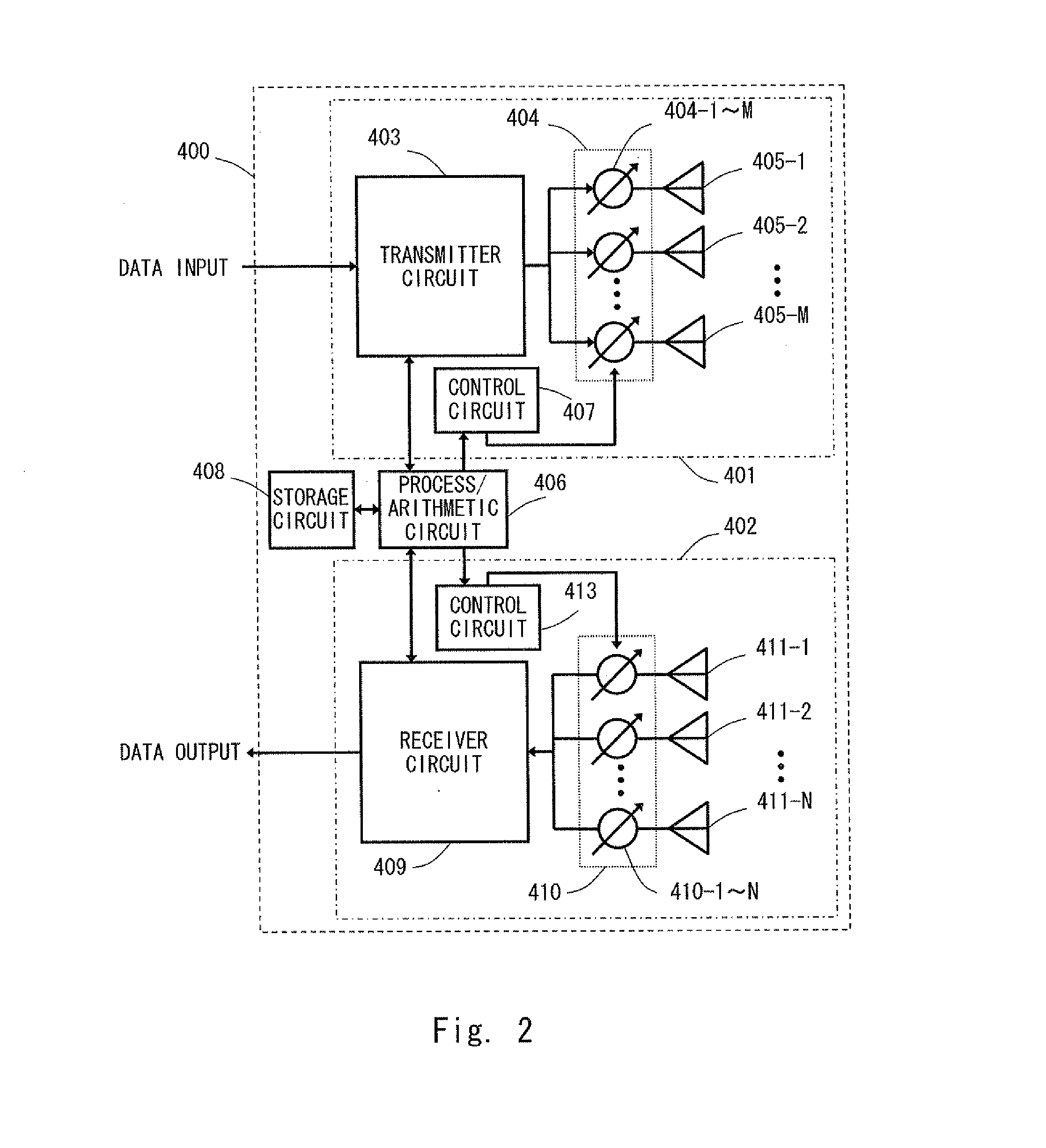Control method of radio communication system, radio communication system, and radio communication apparatus
a control method and radio communication technology, applied in the direction of electrical equipment, radio transmission, transmission path sub-channel allocation, etc., can solve the problems of increased frequency, difficult transmission, and changing environment, and achieve fast and reliable effects
- Summary
- Abstract
- Description
- Claims
- Application Information
AI Technical Summary
Benefits of technology
Problems solved by technology
Method used
Image
Examples
first exemplary embodiment
[0072]A radio communication system according to this exemplary embodiment includes transceivers 400 and 500 having a directivity-controllable antenna for beam forming. There is no particular restriction on the directivity control mechanism of the directivity-controllable antenna of the transceivers 400 and 500. For example, the directivity-controllable antenna of the transceivers 400 and 500 may be a phased array antenna, a sector-selectable antenna, or a mechanically-movable antenna.
[0073]FIG. 2 shows an example of a configuration of the transceiver 400 having a phased array antenna as the directivity-controllable antenna (circuits inessential to the explanation of the operation are omitted). One antenna array includes M transmission radiating elements, and another antenna array includes N reception radiating elements. A transmitter 401 includes a transmitter circuit 403 receiving external data. The output of the transmitter circuit 403 is branched into M outputs and they are input...
second exemplary embodiment
[0118]A second exemplary embodiment according to the present invention is explained with reference to a transition diagram shown in FIG. 6. Note that the configuration of a radio communication system according to this exemplary embodiment may be similar to that of the first exemplary embodiment shown in FIG. 3. Each of states S11 to S18 and transition conditions therebetween in FIG. 6 are similar to the states assigned with the same signs and their transition conditions shown in FIG. 5 described above with the first exemplary embodiment. Therefore, detailed explanation of the states S11 to S18 is omitted.
[0119]In the first exemplary embodiment, the same process is carried out for both when the communication is disconnected and when the communication quality is deteriorated. However, the training for re-establishing the link (S16) described above in the first exemplary embodiment is especially effective when the communication is disconnected and the time synchronization between the c...
third exemplary embodiment
[0122]A third exemplary embodiment according to the present invention is explained with reference to a sequence diagram shown in FIG. 8. The steps shown in this sequence diagram are inserted between the end of FIG. 7A and the top of FIG. 7B. That is, the procedure may be carried out in the order of FIG. 7A, FIG. 8 and FIG. 7B.
[0123]An operation performed in steps S716 to s719 in FIG. 8 is explained. Firstly, the communication device 1 sets the transmitting-antenna setting with values for generating a quasi-omni pattern (S716-1) and sends out training signal (S718-1). The communication device 2 repeatedly receives the training signal (S718-2) while changing the receiving-antenna setting (S717-2) until signal receptions in all or some of the antenna settings detected and determined in the step S702 have been completed (S719-2).
[0124]Processes in steps S720 to S723 are similar to those in the above-described steps S716 to S719 except that the roles of the communication device 1 and 2 a...
PUM
 Login to View More
Login to View More Abstract
Description
Claims
Application Information
 Login to View More
Login to View More - R&D
- Intellectual Property
- Life Sciences
- Materials
- Tech Scout
- Unparalleled Data Quality
- Higher Quality Content
- 60% Fewer Hallucinations
Browse by: Latest US Patents, China's latest patents, Technical Efficacy Thesaurus, Application Domain, Technology Topic, Popular Technical Reports.
© 2025 PatSnap. All rights reserved.Legal|Privacy policy|Modern Slavery Act Transparency Statement|Sitemap|About US| Contact US: help@patsnap.com



